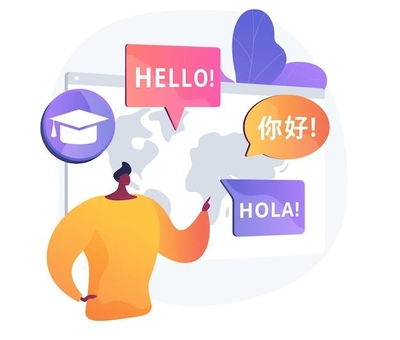
STRATEGIES FOR MULTILINGUAL AND MULTICULTURAL WEBSITES
In an increasingly interconnected world, designing websites that cater to diverse linguistic and cultural backgrounds is essential for reaching global audiences effectively. This abstract explores strategies and best practices for creating multilingual and multicultural websites that resonate with users from different regions and language groups. From implementing language toggles and localization features to adapting content and imagery to reflect cultural nuances, designers must navigate a range of considerations to ensure a seamless and inclusive user experience.
In today's interconnected digital landscape, designing websites that effectively engage with diverse global audiences is paramount for businesses and organizations seeking to expand their reach. This comprehensive exploration delves into the intricacies of creating multilingual and multicultural websites, offering a detailed roadmap for designers to navigate the complexities of cultural and linguistic diversity.
At the heart of designing for global audiences lies the strategic implementation of multilingual features and localization techniques. From integrating language toggles and implementing language-specific URLs to ensuring accurate translation and localization of content, designers must meticulously plan and execute these features to provide a seamless browsing experience for users across different language preferences.
Beyond language considerations, designing for multicultural audiences requires a nuanced understanding of cultural nuances and sensitivities. This entails adapting visual elements, such as imagery, color schemes, and iconography, to resonate with diverse cultural backgrounds while avoiding potential cultural misinterpretations or stereotypes. Additionally, incorporating culturally relevant content and references can enhance user engagement and foster a sense of inclusivity and belonging among multicultural audiences.
Navigating the technical and logistical challenges of managing multilingual content and ensuring consistency across different language versions is also crucial. Implementing robust content management systems (CMS) with built-in multilingual support and establishing clear workflows for content translation and updates are essential steps in maintaining a cohesive and user-friendly multilingual website.
Furthermore, optimizing multilingual websites for search engine visibility and ensuring compatibility with different devices and screen sizes are key considerations in reaching and engaging global audiences effectively.
By embracing a user-centric approach and leveraging innovative design strategies, designers can create multilingual and multicultural websites that transcend linguistic and cultural boundaries, fostering meaningful connections and driving engagement with diverse global audiences.
